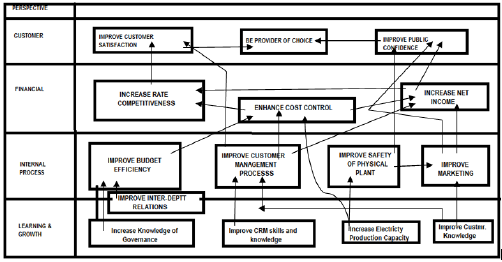
- Strategic Management Tutorial
- Strategic Management - Home
- Strategic Management - Introduction
- Strategic Management - Types
- Strategic Management - Process
- Strategic Leadership
- Organization Specifics
- Performance Issue
- The Top Leadership
- Entrepreneurial Orientation
- The External Environment
- Organization & Environment
- Analyzing the External Environment
- Judging the Industry
- Mapping Strategic Groups
- Organizational Resources
- The Resource Based Theory
- Intellectual Property
- The Value Chain
- Other Performance Measures
- Company Assets: SWOT Analysis
- Business Level Strategies
- Different Types
- Cost Leadership
- Niche Differentiation
- Focus Strategies
- The Best-Cost Strategy
- Aiding Business Level Strategies
- Competitive Moves
- Competitor's Moves
- Cooperative Moves
- International Marketing Strategies
- Pros & Cons
- Drivers of Success and Failure
- International Strategies - Types
- International Markets - Competition
- Cooperative Level Strategies
- Concentration Strategies
- Vertical Integration Strategies
- Diversification Strategies
- Downsizing Strategies
- Portfolio Planning
- Strategy and Organizational Design
- Organizational Structure
- Creating an Organizational Structure
- Organizational Control Systems
- Legal Forms of Business
- Strategic HR Management
- Growth & Nature
- Organizational & HRM Strategy
- Impact of HRM on Performance
- Strategic Management Resources
- Strategic Management - Quick Guide
- Strategic Management - Resources
- Strategic Management - Discussion
Strategic Management - Introduction
A strategy is an action plan built to achieve a specific goal or set of goals within a definite time, while operating in an organizational framework.
According to Rajiv Nag, Donald Hambrick & Ming-Jer Chen, “Strategic management is the process of building capabilities that allow a firm to create value for customers, shareholders, and society while operating in competitive markets.”
The process of strategic management entails −
- Specifically pointing out the firm's mission, vision, and objectives
- Developing the policies and plans to achieve the set objectives
- Allocating the resources for implementing these policies and plans
Keeping an Eye on Expenses and Goals
A balanced record of plans and policies in relation with operational moves are used to evaluate the business's overall performance. Starting from the executive level, the basic starting point is stakeholder interest, needs and expectations (i.e., financiers, customers, owners, etc.)
The following image is an example of a strategy map applicable to a public-sector organization. It shows how various goals are linked with one another and provides the trajectories to achieve these goals.

Common Approaches to Strategy
Richard P. Rumelt
Rumelt’s definition of strategy includes the following steps −
Diagnosis − What problem needs to be addressed? How do the vision, mission and objectives of a firm imply its actions?
Guiding Policy − What according to the firm’s approach will be the framework to solve the problems?
Action Plans − How would the operations look like (in detail)? How can the processes be enacted to be in sync with the policy guidelines and to address the issues available in the diagnosis?
Michael Porter
In 1980, Michael Porter provided the following four key elements that needs to be considered while forming a competitive strategy. The elements are −
- SWOT, especially the strengths and weaknesses of the firm
- Ethical points or personal values of key executives (i.e., management or the board)
- The industry’s opportunities and threats
- Broader societal and stakeholder expectations
Henry Mintzberg
Mintzberg hypothesized five basic approaches, popularly known as 5Ps that can help in developing a robust business strategies.
Strategy as plan − Strategy is a directed course of action to reach the intended set of goals; these are similar to the various strategic planning concept.
Strategy as pattern − Strategy here emerges from a consistent pattern of past organizational behavior. A strategy is realized over time rather than being planned or intended.
Strategy as position − This includes locating the brands, products, or the companies within the market and industry depending on the conceptual framework of the firm’s consumers or other stakeholders.
Strategy as ploy − This is a specific manoeuvre and manipulation intended to outwit a competitor.
Strategy as perspective − This kind of strategy is based on the "theory of the business" or it may be a natural extension of the given mindset or ideological attributes of the organization.